I enjoy staring out of windows. Particularly in pubs. Staring out the window gives a drinker a contemplative mein; staring at the wall worries the staff, staring at the staff can get you barred.
There's many pub windows I love to stare out from. Here's one of them:
It's at the Exeter Arms in Derby. Outside is the ring road and Darwin Place, an inelegant loop to take eastbound traffic down to the A52. Just down the road there's a bus depot and a car park. So there's fun to be had watching all manner of clueless / arrogant / misguided drivers swap lanes at random and without indication. Whilst you're ensconced away from it all. With a pint.
But today my stare was drawn to the building you can barely see: on the left, in the middle, just above the parked cars. Because I'd just been there. Here it is:
The Peacock used to be one of those Marston's pubs that was renowned for a great pint of Pedigree. The Ped's still there but there's now much more; run by Roger and Penny, formerly of the now-closed Smithfield, they've brought over their love of hoppy beers and no-nonsense food. So I enjoyed a couple of pints - a ruggedly brambly-citric Cluster Bomb from Whim and the gooseberry-ish Scarlet Macaw by Oakham.
And then I fancied a trip to the Exeter. Which you can see from the front door of the Peacock:

It's the redbrick building behind the red car. So I wandered down into the underpass, below the A52, and round past several car parks and slots of wasteground. And here's the other side of that window:
It's the bay on the right in the rather carbuncled white extension.
So there I was, sat with a pint of the excellent Dark Drake by Dancing Duck. Beautifully smooth as an oatmeal stout should be. Staring out the window towards the pub I'd just been in. Past car parks and slip roads and dual carriageways and underpasses. And thought: I wonder what the area used to be like? Before the walk between the two pubs was shaped by the demands of the car?
I looked into it. And not so long ago, the walk was shaped by the demands of the canal barge.
Derby used to have a canal running through it. In from the east, close to where I live now, spurring off to serve various industries before crossing the River Derwent and heading south to Swarkestone. And that canal shaped the area between these two pubs. Let's take a walk through history.
From the Exeter Arms - which brewed its own beer - I could have made my way down Exeter Street. At the junction with Derwent Row, opposite the Long Bridge over the Derwent, there was a pub. The White Bear brewed its own beer too, served in brown and white striped mugs. I might have had landlord William Beckett tell me about the three hundred people he's said to have saved from drowning in the canal and river.
Turning off Derwent Row into Erasmus Street, the canal now behind the houses to my left, I'd pass by where William Hazlewood made pickles and jams in a shed on his way to building a convenience food empire. I'd certainly stop at the Hare and Hounds for a pint. Carrying on up the street, the canal turns right and I'd cross it on Pegg's Bridge before walking up Nottingham Road to the Peacock. Maybe I'd look back over the canal basin and that knot of housing and industry on what they called Canary Island, over and away to the Exeter Arms.
The canal and bridges have gone. Erasmus Street too. An area of foundries and coalyards, of budding entrepreneurs and time-served licensees, all cleared for an imperfect ring road.
So the next time I stare out of the window at the Exeter Arms, I'll see more than seething motorists. And every time I see another slip road or shopping centre, I'll wonder what was there before. And the tales that the now-flattened pubs could tell.















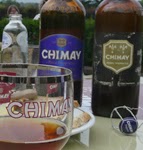
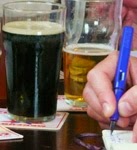
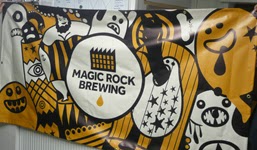


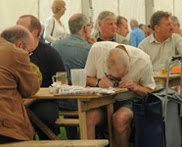




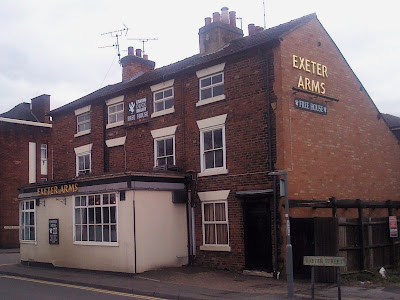










1 comments: